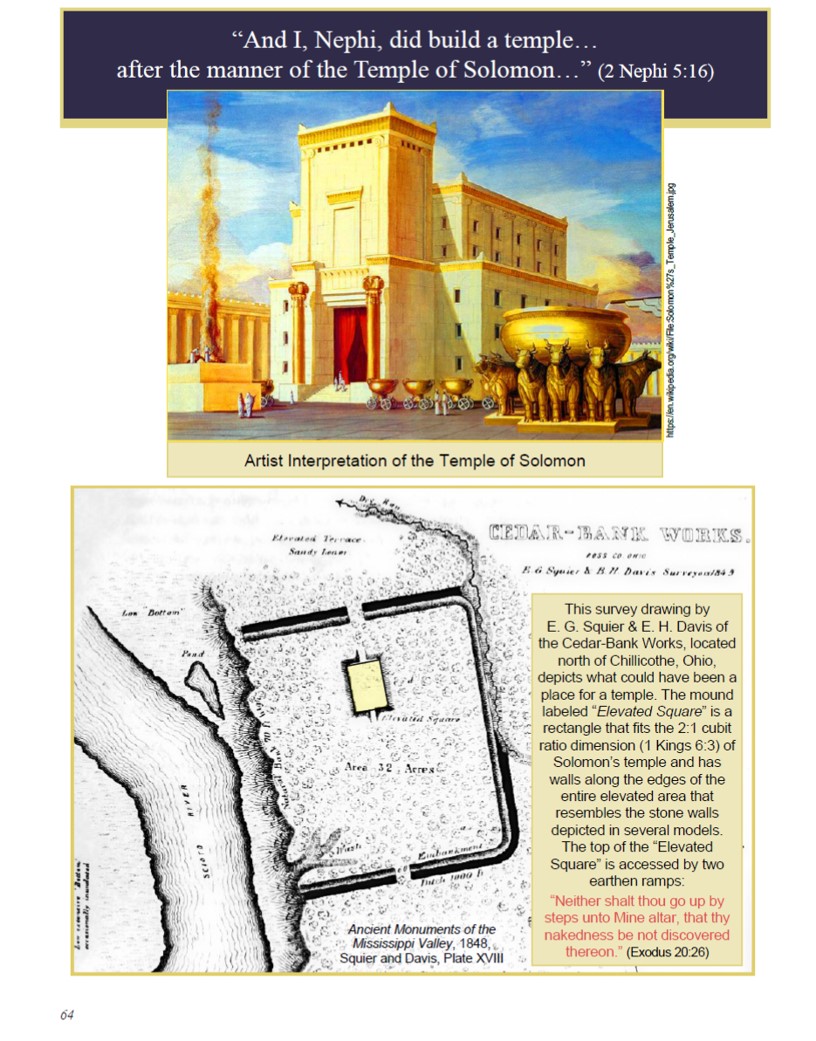I, NEPHI, DID BUILD A TEMPLE
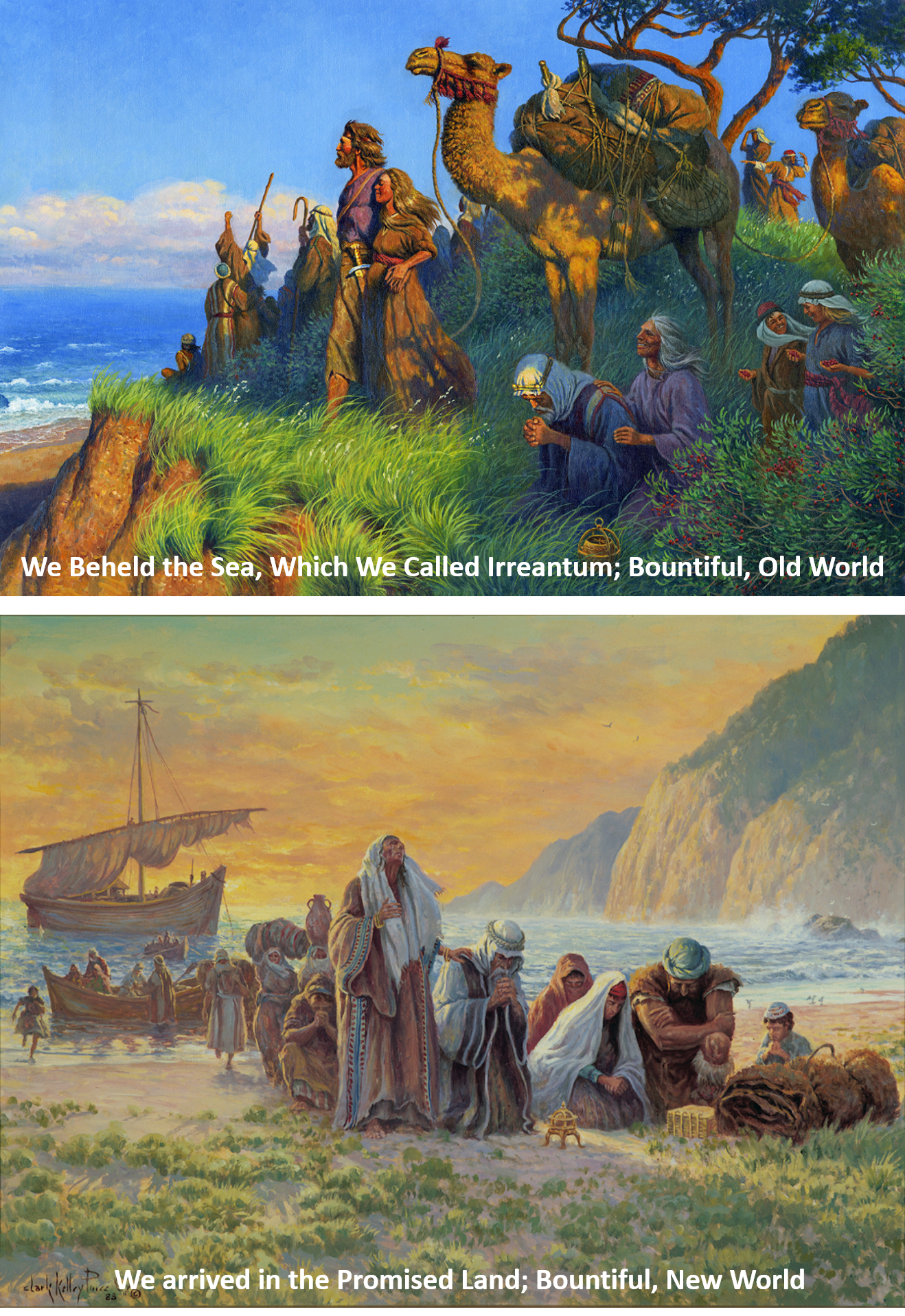
By faith, Nephi obtained the plates of brass, brought Ishmael’s family from Jerusalem, subdued his brothers time and again, obtained food for his family, received revelation from the Lord, taught the Law of Moses, and following the Lord’s instructions said, “I, Nephi, did build a Temple.” 2 Nephi 5:16. Nephi is the ultimate example of faith and one who we all look to as a righteous representative of our Savior Jesus Christ. Nephi also said, “And upon the wings of His Spirit hath my body been carried away upon exceedingly high mountains. And mine eyes have beheld great things, yea, even too great for man; therefore, I was bidden that I should not write them.” 2 Nephi 4:25.
In Nephi’s words we feel the magnitude of the sacred relationship that Nephi shared with Jehovah, the Great I Am, whose name is vital in our understanding of Him. Elder Jeffrey R. Holland said, “To the Lord’s covenant people, names—particularly proper names—have always been very important. Adam and Eve themselves bore names that suggested their roles here in mortality (see Moses 1:34; 4:26) and, when important covenants were made, men like Abram and Jacob took on new names that signaled a new life as well as a new identity. (See Gen. 17:5; 32:28). Because of this reverence for titles and the meanings they conveyed, the name Jehovah, sometimes transliterated as Yahweh, was virtually unspoken among that people. This was the unutterable name of Deity, that power by which oaths were sealed, battles won, miracles witnessed. Traditionally, he was identified only through a tetragrammaton, four Hebrew letters variously represented in our alphabet as IHVH, JHVH, JHWH, YHVH, YHWH.” Whom Say Ye That I Am? Jeffrey R. Holland Ensign Sept. 1974.
Written in Paleo-Hebrew and used from 1000 BC – 400 AD, YHWH represents the name “Jehovah”, or the tetragrammaton. All throughout the Old Testament, the word ‘LORD’ (all small caps), replaced the sacred name “Yahweh” as described above. “I Am” in Hebrew is “Yahweh” and “Adonai” is the Hebrew word for LORD.
Here is an interesting note about the name Nephi. “Nephi; This is also an Egyptian name, usually given as Knephi, and transliterated into Hebrew as Nebi. It means “prophet” or one who speaks with God. The great Osiris, one of the Egyptian gods, was called Nephi or Knephi and the city in his honor was n-ph (vowels always had to be supplied). It is the city we know today as Memphis, located across the Nile from Cairo, but it is referred to by its original name of Noph (a variant of Nephi) in the writings of Hosea, Isaiah, and Jeremiah.” Treasures from the Book of Mormon by W. Cleon Skousen. See “Noph” in LDS Bible Dictionary.
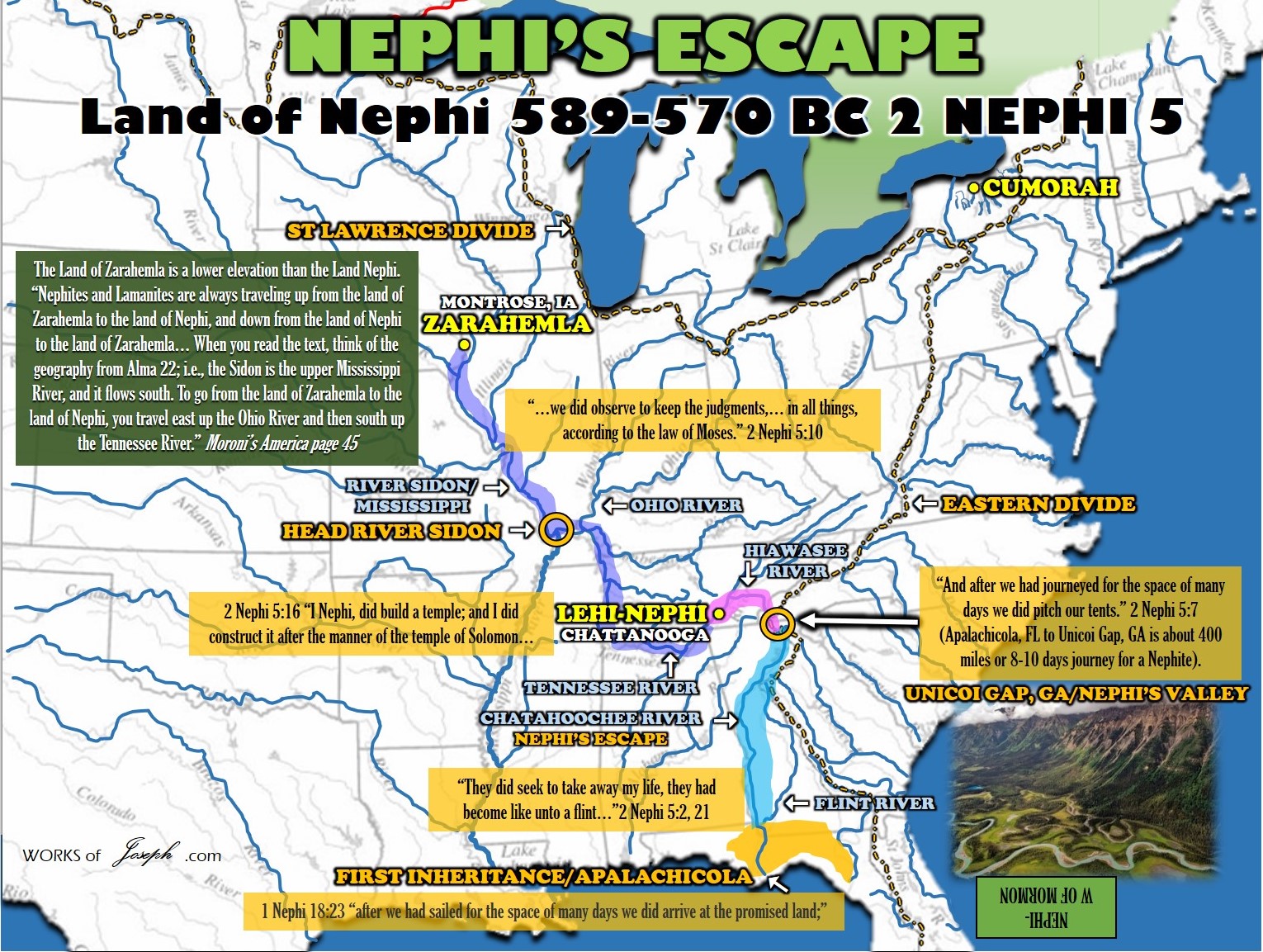
The Nephites loved and followed Nephi as he taught them about faith in the Lord. “And we did take our tents and whatsoever things were possible for us, and did journey in the wilderness for the space of many days. And after we had journeyed for the space of many days we did pitch our tents. And we did observe to keep the judgments, and the statutes, and the commandments of the Lord in all things, according to the law of Moses. And the Lord was with us; and we did prosper exceedingly; for we did sow seed, and we did reap again in abundance. And we began to raise flocks, and herds, and animals of every kind. And I, Nephi, had also brought the records which were engraven upon the plates of brass; and also the ball, or compass, which was prepared for my father by the hand of the Lord, according to that which is written. And I, Nephi, did take the sword of Laban, and after the manner of it did make many swords, lest by any means the people who were now called Lamanites should come upon us and destroy us; for I knew their hatred towards me and my children and those who were called my people.” 2 Nephi 5:7,10-12,14. The Lord speaks of the importance of earthly tools or sacred relics when he said, “And behold, all things have their likeness, and all things are created and made to bear record of me, both things which are temporal, and things which are spiritual.” Moses 6:63.
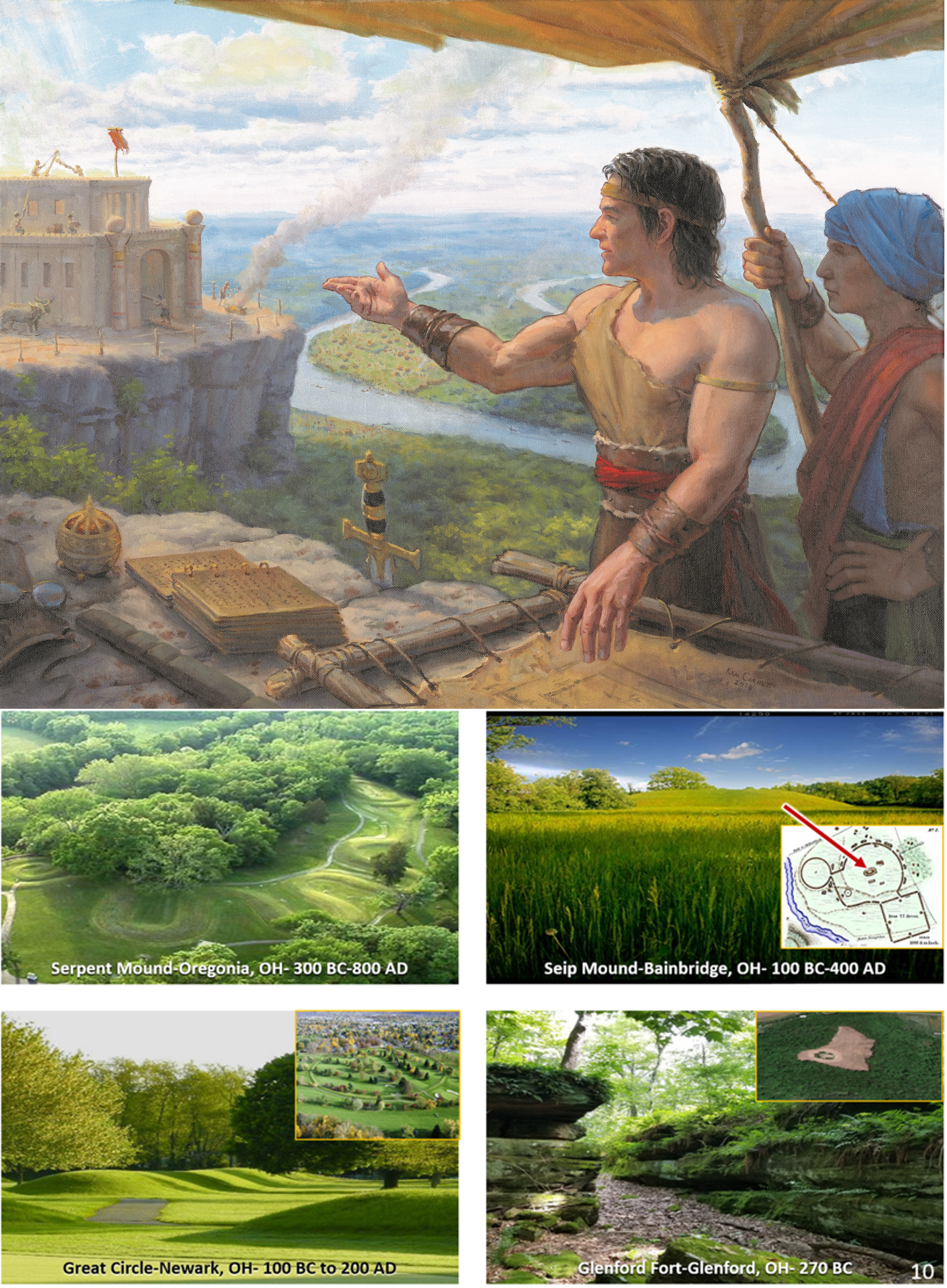
The tools of faith shown in this painting, were utilized by Nephi and subsequent Prophets, and delivered to Joseph Smith in our day. The Lord said through Joseph Smith, “Behold, I say unto you, that you must rely upon my word, which if you do with full purpose of heart, you shall have a view of the plates, and also of the breastplate, the sword of Laban, the Urim and Thummim, which were given to the brother of Jared upon the mount, when he talked with the Lord face to face, and the miraculous directors which were given to Lehi while in the wilderness, on the borders of the Red Sea. And it is by your faith that you shall obtain a view of them, even by that faith which was had by the prophets of old.” D&C 17:1-2.
Nephi’s breastplate in this painting represents Nephi’s readiness for the protection of his people and was not necessarily the one that Joseph Smith found at Cumorah. The breastplate at Cumorah was possibly one of those mentioned in Mosiah 8:10, given to Mosiah by Limhi’s explorers. This Jaredite breastplate was handed down to Alma (Mosiah 28:20), and eventually to Moroni to be buried with the other tools of faith at Cumorah. Mosiah (the second) used seer stones or interpreters, to translate the twenty-four Jaredite plates (Mosiah 28:13), as his grandfather Mosiah (the first) interpreted the Jaredite stone record (Omni 1:20). These seer stones are represented in the painting and may have been handed down from Lehi or Nephi. Moses and the Israelites were also blessed with similar tools of faith that physically represented spiritual things. “…The ark of the covenant overlaid roundabout with gold, wherein was the golden pot that had manna, and Aaron’s rod that budded, and the tables of the covenant; And over it the cherubims of glory shadowing the mercy seat; of which we cannot now speak particularly.” Hebrews 9:4-5.
After Nephi and his people were driven into the wilderness and found a place to settle, Nephi continued to instruct and serve his people. “And I did teach my people to build buildings, and to work in all manner of wood, and of iron, and of copper, and of brass, and of steel, and of gold, and of silver, and of precious ores, which were in great abundance. And I, Nephi, did build a temple; and I did construct it after the manner of the temple of Solomon save it were not built of many precious things; for they were not to be found upon the land, wherefore, it could not be built like unto Solomon’s temple. But the manner of the construction was like unto the temple of Solomon; and the workmanship thereof was exceedingly fine.” 2 Nephi 5:15-16 italics added.

Nephi wanted his temple to be like Solomon’s, not in size, but in functionality. To perform the rituals prescribed by the Law of Moses his people would need a temple similar to Solomon’s in regard to rooms and relics. The workmanship of the temple as Nephi stated was “exceedingly fine”, and likely required organized building plans, using measuring rods, a line of flax, and other mathematical tools. Ezekiel 40:2-3. Nephi may have written these plans on parchment. 2 Tim. 4:13. Over 85% of the Dead Sea Scrolls were written on calfskin parchment known as vellum, so it’s easy to imagine that the Nephite culture used similar material. Nephi may have used black inks like those found on the Dead Sea Scrolls that are made up of carbon soot mixed with olive oil, honey, or water, to thin the ink to a proper consistency for writing. In order to apply the ink to scrolls or parchment, its writers used “reed pens” by sharpening a reed straw, piece of bamboo or other wood.
Shortly after the Nephites separated themselves from the Lamanites (establishing the land of Nephi), Nephi states that he “did take the sword of Laban, and after the manner of it did make many swords, lest by any means the people who were now called Lamanites should come upon us and destroy us.”
“These ores are all found in Tennessee in the area near Ducktown. The mine there has extracted over 15 million tons of copper ore in modern times. The French Huguenots enjoyed friendly relations with the Mountain Apalachee Indians, who were mining gold, copper and silver near their villages. The gold came from what is now Georgia; the silver from western North Carolina; and the copper from southeast Tennessee. To honor his friendship with these Native Americans, De Laudonniere named the region, “Les Montes Apalachiens.” Jonathan Neville Moroni’s America page 351
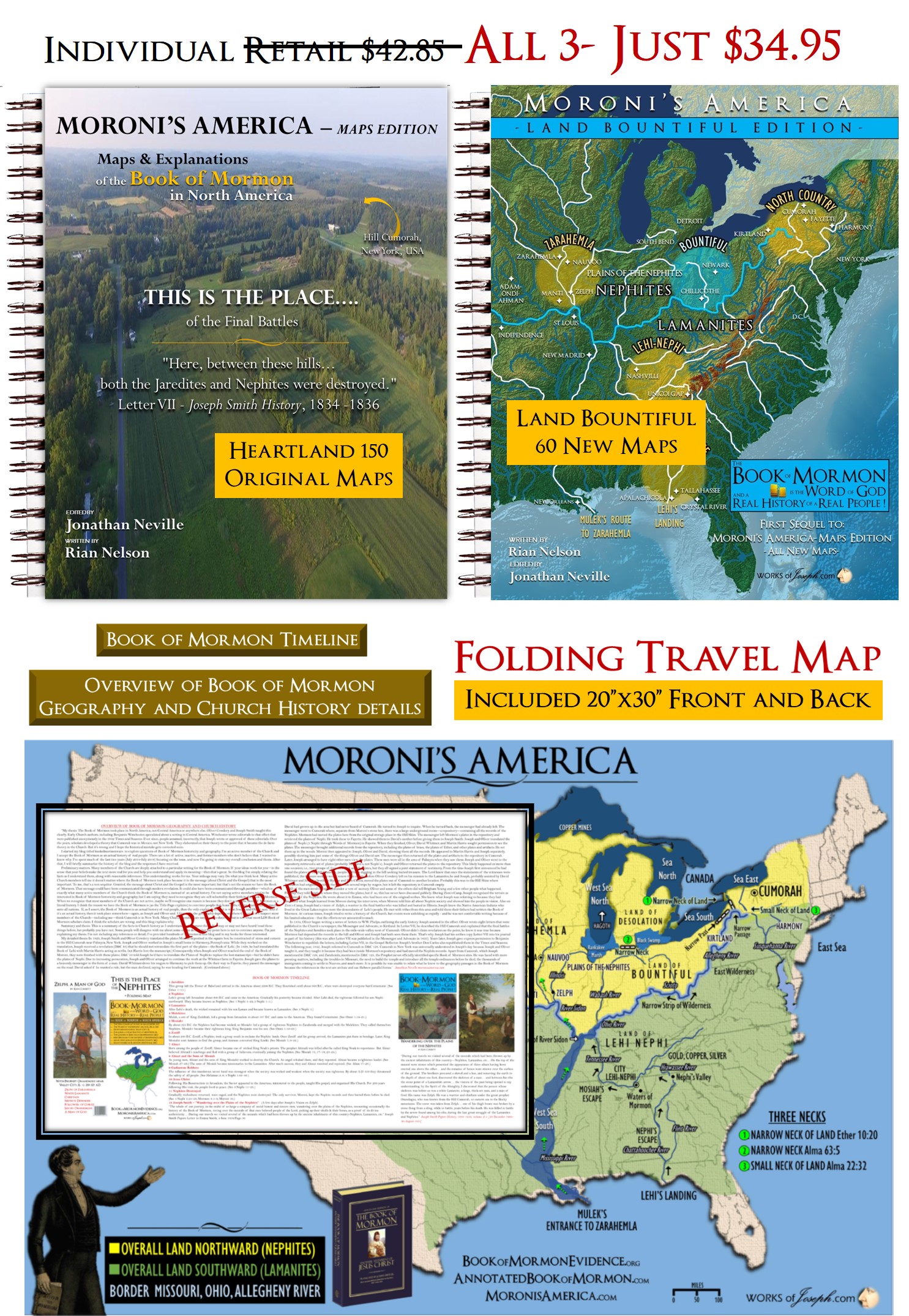
Tons of Ore east of Chattanooga (Proposed City Nephi)
Ducktown TN was the center of a major copper-mining district from 1847 until 1987. The district also produced iron, sulfur and zinc as by-products. In 1799, gold was discovered in Cabarrus County, North Carolina, when Conrad Reed found a 17-pound “glittering stone” in Little Meadow Creek In 1828 Dahlonega, GA was the site of the first major gold rush in the United States.
One of Lehi’s contemporaries was Jeremiah. “Some of Jeremiah’s prophecies were contained in the brass plates of Laban secured by Nephi.” LDS Bible Dictionary; Jeremiah. Another contemporary of Lehi’s was the Prophet Ezekiel who prophesied from c.608-570 BC, about a messenger showing him the specific steps in building a temple. It seems possible those instructions to Ezekiel, may have been on the plates of brass or shared with Lehi.
The Nephites surely had tabernacles in the wilderness as Moses did to offer sacrifices, so why did the Nephites need temples? The brief account in Alma 10 about Aminadi, who interpreted the writing on the wall of the temple, which was written by the finger of God, may help us understand. It wasn’t about sacrifice, but about the revelation of higher knowledge and how to come into the presence of God, accessing knowledge from Him and becoming more like Him. The temple then was a place for the revelation of higher truths that could only be understood through wisdom given by God’s Spirit.
The temple would be built on the highest point of the Nephite settlement. (Painting represents Lookout Mountain above Moccasin Bend on the Tennessee River). It would be facing directly east symbolic of The Savior’s coming. It was to be built like Solomon’s. The altars of the temple were made of stacked stone, not hewn stone. “The word in Exodus 20:25 which is translated as ‘tool’ is the Hebrew חרב which most literally means ‘sword’. There explains that a sword is designed to shorten life, while an altar is designed to lengthen life by being used to achieve atonement. It makes sense, therefore, that one should not be used in the formation of the other.” Rashi, Medieval French Rabbi.
In reference to Solomon’s Temple, the LDS Bible Dictionary says; “The temple walls were composed of hewn stone made ready at the quarry. The roof was of cedar and the walls were paneled with it. The cedar was carved with figures (cherubim, palm trees, and flowers) and was overlaid with gold fitted to the carving. All the materials for the house were prepared before they were brought to the site… There were two temple courts. The inner court was surrounded by a wall consisting of three rows of hewn stone and a row of cedar beams.” 1 Kgs. 6:36. “And Solomon’s builders and Hiram’s builders did hew them, and the stonesquarers: so they prepared timber and stones to build the house.” 1 Kings 5:18. “Pillars of Solomon’s temple (1 Kgs. 7:21; 2 Chr. 3:17); the names denote “He will establish” [Jachin] and “In Him is strength” [Boaz]. The pillars, which stood on the south and north sides of the porch, were probably ornamental and not intended to support any part of the weight of the building.” LDS Bible Dictionary. The outside of the temple may have been finished with a mortar cement made out of limestone which was prevalent in the Promised Land. We also find mention of cement houses in the Book of Mormon. Heleman 3:7. “Lime mortar is a type of mortar composed of lime and an aggregate such as sand, mixed with water. It is one of the oldest known types of mortar, dating back to the 4th century BC and widely used in Ancient Rome and Greece.” Lucas, A. 2003 Ancient Egyptian Materials and Industries. After processing, products derived from limestone have the unique ability to return fairly quickly to their original chemical form.
Nephi’s building of the temple was to bless the lives of his people. Elder Maxwell explained the significance of temple worship in our day when he said, “The real act of personal sacrifice is not now nor ever has been placing an animal on the altar. Instead, it is a willingness to put the animal that is in us upon the altar—then willingly watching it be consumed! Such is the ‘sacrifice unto [the Lord of] a broken heart and a contrite spirit.’ (3 Nephi 9:20).” Neal A Maxwell, Meek and Lowly 1987 emphasis added. Joseph Smith during Zion’s Camp, stopped some men from killing rattlesnakes and then said, “…Let man first get rid of his destructive propensities and then we may look for a change in the serpents’ disposition.” The Prophet Joseph Smith also taught us about faith and sacrifice saying, “A religion that does not require the sacrifice of all things never has power sufficient to produce the faith necessary unto life and salvation; for, from the first existence of man, the faith necessary unto the enjoyment of life and salvation never could be obtained without the sacrifice of all earthly things.” Joseph Smith Jr. Lectures on Faith. President Ezra Taft Benson succinctly restated the message of Abraham 3:25 when he said: “The great test of life is obedience to God… We are not here to test or “prove” God, but to be tested and proved ourselves. We are on trial, not God.” Ensign, May 1988.
Nephi ordained his brother Jacob and others to teach in the temple. Jacob 1:17. Nephi knew his people needed the greater light that a temple would provide. Nephi’s faith is a great example to us all of passing this important test of life, and the building of the first Nephite temple was a sign to all, of his devotion to the Great Jehovah.
